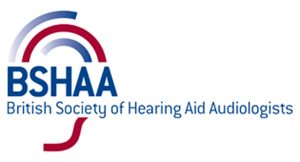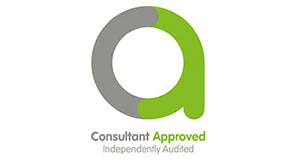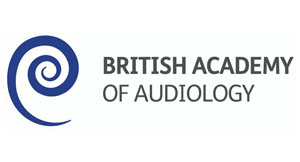Ear wax is a natural lubricant and antibacterial material that’s produced by sebaceous glands within the ear canal. Ear wax can help to clean, lubricate, and protect the lining of the ear by trapping dirt and stopping too much water from entering the ear canal. Find out more about what is ear wax and the benefits it can have.
Although ear wax can have many benefits and is a normal part of human physiology, issues can arise when there is excessive wax production, or if the outer ear canal is not extracting it naturally, which can lead to symptoms such as hearing loss. When this is the case, it’s usually recommended that the ear wax is removed to see if this is the cause of the symptoms.
It’s important to bear in mind that symptoms such as hearing loss may be caused by middle or inner ear problems rather than a build-up of ear wax, so ear wax removal won’t always be the best option. In these cases, the doctor will discuss potential next steps with the patient, which might include referral for hearing tests, middle ear pressure tests, scans, or balance testing. The exact tests required will depend on the individual patient’s history and examination findings.
If you’re interested in microsuction ear wax removal, Midland is home to the best, most experienced ear wax removal specialists. At Midland Hearing Centre in Solihull, you’ll find the most experienced microsuction specialists in the – our ear cleaning clinic utilises microsuction for fast, safe wax removal.
All of our ear cleaning and ear wax removal procedures are carried out using state-of-the-art microsuction equipment and surgical grade ENT microscopes and microsuction equipment by highly experienced microsuction specialists. At Midland Hearing Centre, we also train other clinicians to perform microsuction ear wax removal in Midlands and beyond through our gold standard Ear Care and Microsuction Training Course at Ear Care Academy.
Microsuction ear wax removal is a technique for removing ear wax that uses either a binocular operating microscope (which allows for depth-perception and magnification), or specialised magnification loupes, similar to ones dentists and vascular/plastic surgeons use.
These instruments allow the clinician to look in the ear canal in detail and use a very fine sterile suction device at low pressure to remove the wax – not dissimilar to using a tiny vacuum cleaner inside the ear to remove the wax. Using microsuction means that we can visualise the external ear canal and its contents in detail with minimal need to touch the earlobe, making the procedure more comfortable for patients.
Occasionally, we may need to use other instruments to remove particularly hard wax, such as Jobson Horne probes, hooks, or micro forceps).
Unlike at most other ear clinics, microsuction ear wax removal procedures at Midland Hear Centre are only performed by highly experienced General Practitioners with a specialist interest in ENT (Ear Nose and Throat) medicine. Find out more about our specialist microsuction ear wax removal team.
There’s no one-size-fits-all answer to ‘how often can you have ear microsuction?’, as it varies from patient to patient. Some are unlucky and develop a lot of wax in their ear canal, with subsequent blockages (as often as every 3-6 months), which means they may require ear microsuction every 4-6 months.
There’s no one-size-fits-all answer to ‘how often can you have ear microsuction?’, as it varies from patient to patient. Some are unlucky and develop a lot of wax in their ear canal, with subsequent blockages (as often as every 3-6 months), which means they may require ear microsuction every 4-6 months.
Ear syringing typically can’t be carried out as often, as the water flushed into the ear during the procedure has to hit the sensitive ear canal and delicate eardrum, which then needs time to recover. In contrast, microsuction means we can latch onto the ear wax to pull it out, while very soft wax will simply be sucked up by the suction probe, meaning the procedure can be carried out as often as necessary.
We also use ear microsuction to treat outer ear infections. This helps us to remove debris or pus from the canal so that antibiotic drops can do their job more effectively.
Softening ear wax before microsuction is not essential but using olive oil drops or sodium bicarbonate drops to soften the wax before the procedure may make it faster and more comfortable.
There’s no one answer to ‘does ear wax removal hurt’, as it ultimately depends on the method of removal. If the method being used is ear microsuction and it’s being performed by an experienced clinician, the procedure is unlikely to be painful. The main thing that patients will notice is the sound of the suction probe, which you’ll soon become used to. We use extra fine tips for the suction of any ear wax very close to the drum to avoid excessive exposure to suction noise.
Yes, you can have microsuction with an ear infection, but bear in mind that the infection itself could be uncomfortable, meaning microsuction of the infected ear canal can be painful as a result. However, microsuction of infected debris and wax from the external ear canal is the most effective treatment for external ear infection (otitis externa), while antibiotic drop usage may also help if the cause is bacterial. In this event, you can help to reduce some of the discomfort by taking your preferred painkiller an hour prior to attending your appointment.
Microsuction ear wax removal is the safest and most effective procedure for examination and treatment of the ear when performed by experienced and well trained clinicians. Read more about why ear microsuction is the best and safest method.
In most cases, it can take up to 15 minutes to perform microsuction on both ears. It’s important to keep as still as you can during the procedure to ensure it can be performed as efficiently as possible. The ear canal is very small and is in very close proximity to the eardrum, so even small movements can take the ear canal image out of focus and make the procedure take longer.
Yes – ear microsuction is perfectly suited and highly recommended for patients who have had ear surgery in the past, such as: mastoidectomy, eardrum repair, grommet insertion, stapedectomy, and refashioning of the ear canal.
Yes – microsuction ear wax removal is the safest method of cleaning the ears if you have a perforated eardrum. Patients who have perforated eardrums must not have their ears irrigated with water or syringed.
Yes – you can travel by plane after undergoing ear microsuction (unless you’ve been advised not to fly due to other medical reasons).
Unfortunately, insurers generally do not cover ear microsuction. If you undergo microsuction ear wax removal at Midland Hearing Centre, payment is made directly to the clinic at the end of the consultation by cash or by credit or debit card.
Midland Hearing Centre is able to provide you with an invoice, which you can present to your insurer if they allow you to claim back any treatment payments.
Young children often find microsuction ear wax removal more comfortable than ear irrigation or syringing. To undergo ear microsuction, we recommend that children should be
At least 6 years old
Able to lie still on the couch for 15 minutes or so with the assistance of a parent
The microsuction procedure can be noisy when using the suction machine, but we can remove ear wax using other instruments to make the procedure more acceptable to young patients if required.
Midland Hearing Centre has been successfully providing microsuction ear wax removal to thousands of patients over many years. We officially started offering this service to patients outside of our registered list 6 years ago; all of our microsuction specialists have several years’ experience in performing this procedure.
Alongside microsuction ear wax removal, we also offer medical consultations for other ear-related problems, such as ear pain, tinnitus, dizziness, and middle ear problems. Our clinic has excellent links with specialist Audiologists to perform audiometry and tympanometry testing as well as balance/dizziness testing. We are also able to refer patients for further investigations including MRI and other imaging scans, and to consultant ENT surgical colleagues if surgery is being considered.
At Midland Hearing Centre, ear microsuction appointments start at £40 for one or both ears. Read more about our ear wax removal costs.
Medical consultations for more complex issues such as ear infection, tinnitus, dizziness, or middle ear problems start from £100, and this fee includes microsuction if it is needed.
If you can’t find an answer to your question about microsuction ear wax removal, please don’t hesitate to contact us.



